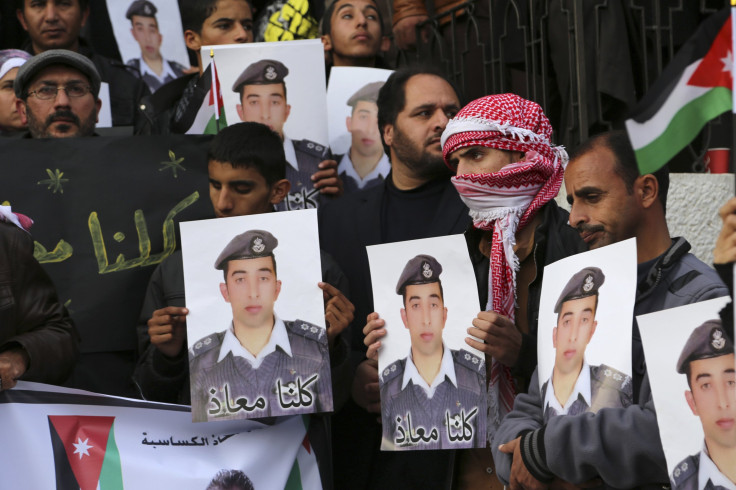Special Forces May Have Tried To Rescue Jordanian Pilot Muath al-Kasaesbeh

On Jan. 1, 2015, two helicopters hovered low over the city of Raqqa, the Syrian headquarters of the Islamic State group, where a Jordanian fighter jet had crashed a week earlier. Coalition jets pounded the area in some of the fiercest airstrikes since the beginning of the U.S.-led air campaign in Syria, while soldiers dropped from the helicopters.
As ISIS armed men flocked to the scene of the attack, two other helicopters were attempting to land in another corner of Raqqa, where a building was being used as a prison holding the captured Jordanian pilot who had bailed out a week earlier from that crashing jet, Muath al-Kasaesbeh. The attempted distraction did not draw in every militant. Those near the prison shot anti-aircraft missiles at the helicopters, which had to retreat. Just 20 minutes after they arrived, the helicopters and soldiers were gone; al-Kaseasbeh was not with them. ISIS allegedly executed him three days later.
That is how the anti-ISIS activist group Raqqa Is Being Slaughtered Silently described to International Business Times what it called a failed mission to rescue the Jordanian pilot, possibly conducted by Jordanian special forces. The group has been the first to report on several stories from Raqqa, including the death of 26-year-old al-Kaseasbeh in January, all of which later proved to be true.
Abu Ibrahim Raqqawi, a spokesman for the group who is based outside of Syria, related an eyewitness account of the mission to IBTimes via Skype. He maintains constant contact with at least 12 members of the group in Syria, who cannot speak to the press for security reasons. The activists inside Raqqa record the “crimes of ISIS” and the spokesman publishes them on their website and through social media.
“They were very, very close to the building where Muath was,” Raqqawi said, citing sources with links to ISIS. “After that, they moved him.”
ISIS released a video Tuesday that purportedly shows the Jordanian pilot’s execution, by burning alive. After news of the video broke, Jordan state media confirmed Tuesday that the Islamic State group executed al-Kaseasbeh, and said he was killed a month ago, on Jan. 3.
When the group first reported on the alleged rescue mission in January, the Pentagon denied that the U.S. was involved. However, a covert and high-risk rescue mission such as this one would likely have been carried out on the ground by the hostage’s national government, not the U.S.-led coalition, which, however, may have provided air cover with jets.
Members of Raqqawi’s group “reported seeing soldiers wearing the Jordanian Army uniform while the troops tried to look for the hostages in the nearby villages” on the day of the alleged rescue attempt. “We think they are Jordanian but we cannot confirm,” he said.
The spokesman for both Jordan's Ministry of Interior and Ministry of Defense said he was unwilling to give information regarding Jordanian special forces in Syria, and said that Jordan was not releasing information regarding al-Kaseasbeh until Wednesday.
The U.S. State Department and the Department of Defense did not respond to repeated requests for comment on the attempted rescue mission. However, spokesmen for Operation Inherent Resolve, as the airstrikes campaign is code-named, said the U.S. and its regional allies conducted only two airstrikes in Raqqa on Jan. 1, 2015.
“It’s not the first time we report on something like this first,” Raqqawi said. The group was one of the first to report that U.S. Special Forces attempted to rescue James Foley and Peter Kassig on July 4, 2014. The Pentagon confirmed this in August, after ISIS already had released a video of Foley’s execution. According to the group in Raqqa, Jordanian special forces assisted in that mission.
© Copyright IBTimes 2024. All rights reserved.






















